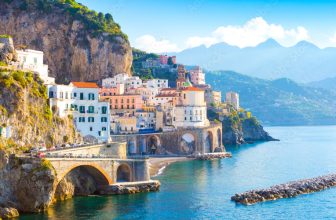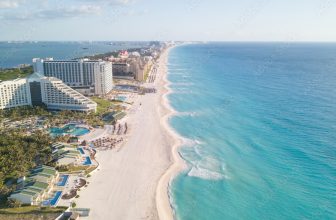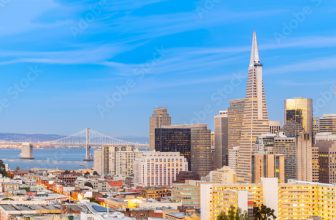
There are many important facts about the Maldives to know before you decide to visit the country. These facts include the government structure, culture, and location on the world’s coral reef. Read on to learn more. Also, see our guide to Maldives tourism for more information. The following information is a quick overview of the Maldives. Besides, you’ll learn about the Maldives’ economy. We’ve provided useful links to help you plan your trip to this beautiful island nation.
Tourism in the Maldives
While tourism is booming in the Maldives, there are many problems associated with the industry, including environmental degradation. The Maldives is dependent on inbound travel to meet its financial needs. As such, it has been slow to address these issues. Since the tourism industry is so dependent on foreign visitors, the Maldives has set aside a small portion of its budget for sustainable tourism initiatives. Sustainable tourism initiatives, such as solar energy and water recycling, contribute to the local economy and protect the environment.
The first group of tourists in the Maldives were photographers and journalists who stayed in ordinary houses in Male. The men who took care of them included Hussain ‘Champa’ Afeef and Mr. Maniku. These tourists thought the Maldives was an idyllic place to relax, swim, and sunbathe. The first resort opened in 1972. Now, tourism has become an integral part of Maldives life.
The Maldives’ tourism industry is the lifeline of the country’s economy. It has provided much-needed income for educational and healthcare centers, and provided locals with an alternative to fishing and other unsustainable practices. While the Maldives still suffers from poverty, lacks jobs, and is not yet fully democratic, tourism is essential to the country’s long-term sustainability. The government has set up a tourism ministry to encourage tourism.
Sustainable tourism practices are essential to preserving the natural environment. Several resorts in the Maldives have implemented recycling and stricter waste disposal policies to protect the environment. They also encourage local residents to make money through tourism. However, tourism in the Maldives is not entirely sustainable, as it encourages development that is detrimental to the local environment. It also encourages local residents to earn money by engaging in illegal activities that contribute to pollution.
Despite its rocky past, the Maldives has made significant strides in re-establishing its economy and promoting sustainable development. The country was the first country in Asia to reopen its borders after the 2004 tsunami. Its economic recovery has made it one of the world’s best success stories amid the impact of a pandemic. More than 500,000 tourists are expected to visit the country by October 2020, a milestone that would mark the return of the tourism industry to full operation.
Culture of the Maldives
The diverse cultures and traditions of the Maldives reflect influences from many areas, including India, Indonesia, and Malaysia. These cultures have all combined to create a unique culture. The Maldivians enjoy various forms of dance, including the kathak dance, which originated in North India. In addition, many locals still enjoy the music and dances of the 1950s and 1960s. The people of the Maldives are known for their tolerance and friendliness towards foreigners.
Family members are respected and the role of women has been well-established in Maldivian culture. In early Maldivian history, women were even considered rulers or Sultanas, a strong indication of how matriarchal the culture was. Today, women hold prominent roles in business and government. A large percentage of government employees are women. Women are generally equal in education to men. Women also serve in the Parliament and the Cabinet.
Cultural elements are diverse, with unique traditions and traditional livelihoods. Handicrafts are a prominent part of Maldivian culture, from lacquer-work to reed mats. Women in the Maldives also make mats made from dyed reeds, which are used as prayer mats and sold as souvenirs. Traditional boat-building is also a common activity in the Maldives.
There are many ways to learn more about the history of the Maldives. The first Maldivians came from the Indian subcontinent. In ancient times, they were seafarers and adopted many traditions from different parts of the world. The culture of the Maldives is especially rich in tradition and folklore. The traditional drumming and dancing known as boduberu, for example, shows the influence of African culture. This dance forms are often accompanied by songs in East African languages.
Islam reached the Maldives in the 12th century and consolidated as a sultanate. Islam also brought the Maldives under greater European influence. In 1887, the Maldives became a protectorate of the United Kingdom. In 1965, the country gained independence from the United Kingdom and established a presidential republic. In 2008, the country legalized political parties. Until recently, there was only one political party in the country. In the last decade, the government has legalized political parties and implemented democratic reforms.
Location of the Maldives on the world’s coral reef
The location of the Maldives on the world”s coral reef is a prime location for divers. The reef is the most dominant ecosystem in the Maldives, sheltering thousands of marine species. It is also an integral part of Maldivian culture and heritage. Scuba diving is the primary tourism industry, and many people visit the islands to experience this natural wonder. A massive school of blue striped snapper colours the water a vivid yellow. Smrutica Jithendranath took the photo of this incredible creature.
The climate change has taken a toll on the Maldives’ coral reefs. As ocean temperatures increase, coral die and lose their colour. This process is known as coral bleaching, and the Maldives are one of the most vulnerable to the effects of global warming. The high temperatures of the ocean stress the coral, forcing it to expel algae from its tissues. This process is called coral bleaching and can last for months.
The Maldives is a small nation of islands in the Indian Ocean, just 500 miles south of India. The Maldives’ fragile environment is made more vulnerable by the presence of coral reefs, which are the base of the islands and are an essential defense system. Hence, the conservation of these ecosystems is vital for the Maldives’ long-term survival. You can see more than 700 different species of marine life here, as well as experience some of the most fascinating astronomical experiments.
The Maldives’ corals are known to be incredibly diverse, but despite their beauty, the corals are facing a serious crisis. This global problem, known as coral bleaching, has affected 60 percent of the reefs in the region. Corals that are stressed by the warming ocean’s water will expel algae and turn white. This means that they are unable to regenerate, and their mortality rates are higher than in other parts of the world.
In 1998 and 2016, two heat waves led to mass coral mortality in the Maldives. Analysis of live coral cover shows that the 1998 heat wave led to a more than 90% mortality rate, with only 6.8% and 0.3% of the corals left after the event. While the 1998 heat wave did not affect coral mortality from human pressure, the 2016 heat wave did. The bleaching event affected all reefs, including lagoons and oceans.
Economic development of the Maldives
The economy of the Maldives is largely based on high-end tourism. The country’s GDP per capita is approximately US$3,740, and the percentage of GDP that is attributed to foreign exchange is nearly sixty percent. The economy is highly dependent on the services sector, and manufacturing contributes only about three percent of GDP. In terms of employment, fishing employs around 45% of the workforce, with only three garment factories.
The government of the Maldives implemented several development programs to expand the economy. Investment in fishing, textile manufacturing, food processing, communications, health services, and tourism industries were also expanded. The country’s new commercial harbor opened in 1986, and the international airport was upgraded in the late 1980s. In the coming years, the Maldives will focus on diversifying its economy away from tourism and towards other industries. The Maldives has one of the lowest rates of taxes in the world, and has no import/export restrictions on most products.
The Maldivian economy is based on tourism, construction, and fishing. High-end tourism has contributed to the country’s rise to upper middle-income status, reducing poverty and unemployment. The Maldives’ GDP grew by 6.5% per year between 2010 and 2019. Unfortunately, the Covid-19 pandemic has had a negative impact on the economy. It is projected that the population will decrease by 30% in 2020 due to the disease.
Australia is a key partner in the Maldives. As of January 2019, Australia is the largest foreign investor in the Maldives, and the two nations have signed several key agreements. The Maldivian Visa Exemption Agreement will make it easier for Maldivians to visit China. This agreement covers a total of 400 million Yuan, or 63 million USD. But, despite these successes, China has not lifted its travel restrictions.
While the Maldives has developed its economy, it is still struggling to overcome its fiscal deficit. The country’s economy is primarily based on tourism, fishing, and shipping. Tourism contributes nearly two-thirds of GDP and 60% of foreign exchange receipts, despite being one of its biggest challenges. In 2015, economic growth slowed to 2.8%, despite an increase in tourism-related tax revenue. Nevertheless, public debt has reached 142.6 percent of GDP.






